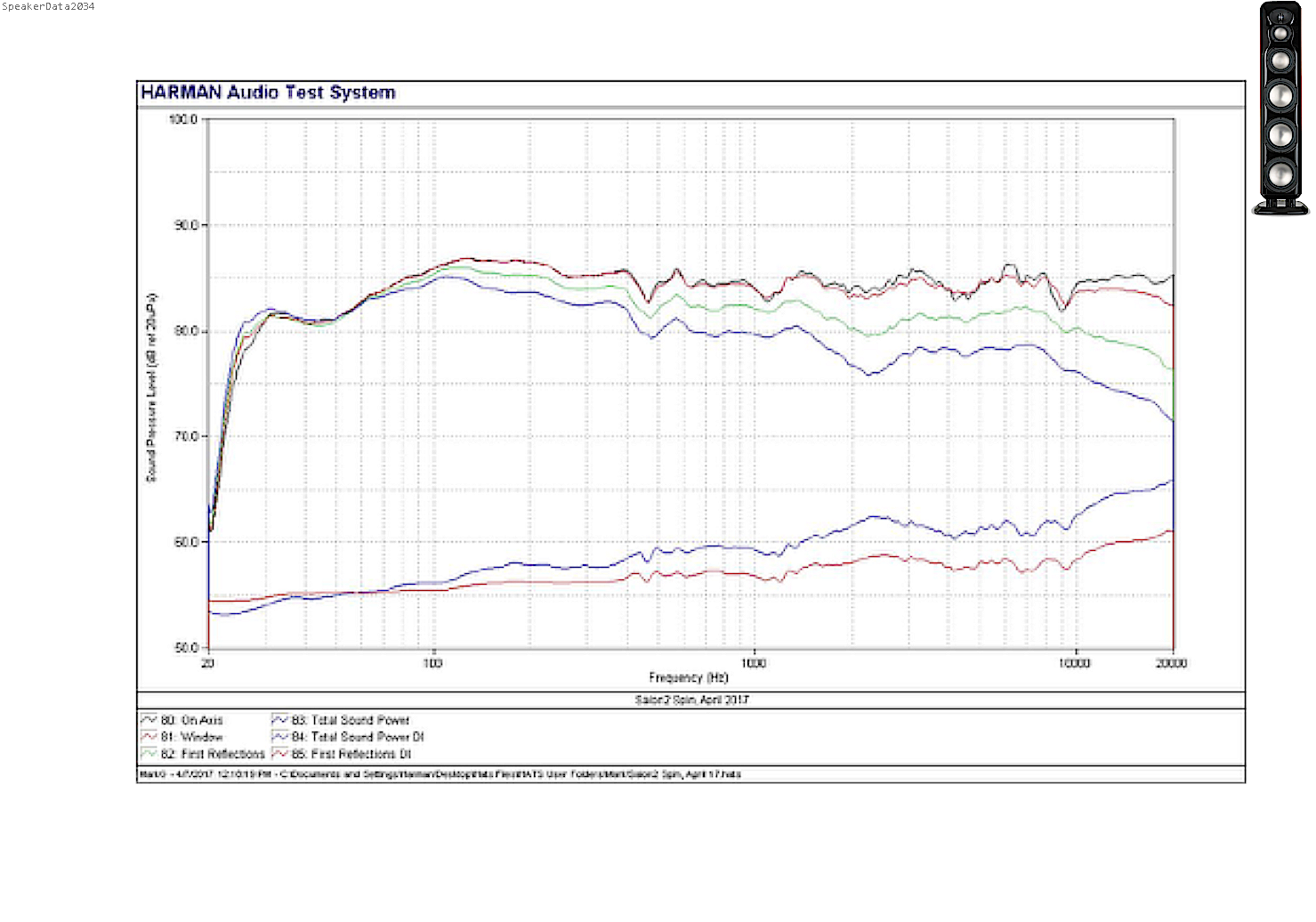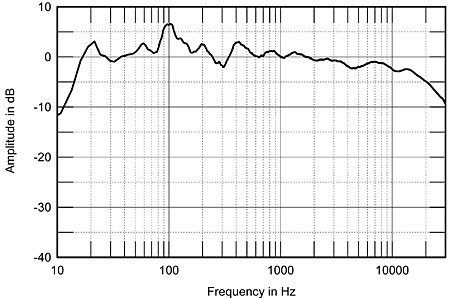(Sorry for the clickbait title)!
I've been looking back over the reviews of some of the most recommended speakers and one thing they seem to have in common is really weak bass.
Perhaps I'm making an incorrect assumption, but I'd expect that in the ideal world we would aim for the in-room response to have a gentle downward slope which carries on all the way to 20Hz (dashed blue line below). Furthermore, when it rolls-off, it is better if it drops sharply so that it doesn't put bumps into the region that potentially overlaps with the sub.

As a reminder, the manufacturer's specification is -6dB at 38 Hz which (if you are generous) could be achieved by that weird shelf in the bass response.
Preference rating for this is 6.5 or 8.1 with a sub.
Obviously small bookshelf speakers (like the Kef R3) will struggle to generate deep bass, so let's look at a tower type speaker (the Revel F35).

Again, the bass starts rolling off at about 100 Hz.
Manufacturer's spec is 55Hz, 46Hz, 35Hz (-3 dB, -6 dB, -10 dB).
Preference rating for this is 4.9 or 7.4 with a sub.
Now let's look at the Revel with the highest preference score currently listed in the review index (the F328Be):

Again, the bass starts rolling off at about 100 Hz.
Manufacturer's spec is 24Hz (-10dB); 26Hz (-6dB); 35Hz (-3dB).
Preference rating for this is 6.5 or 7.8 with a sub.
At this point I'm starting to wonder, is the Klippel actually able to measure the low bass frequencies properly?
But now let's look at this not recommended speaker (the B&W 805S):

Despite being a small bookshelf type speaker, the bass manages to extend down to about 60Hz before starting to roll off.
Manufacturer's spec is -6dB at 42Hz, -3dB at 49Hz.
Preference rating for this is 4.5 or 6.3 with a sub.
The low preference score and non recommendation for the 805S are due to the bumps in the frequency response. Such bumps could be caused, for example, by port resonances which possibly could have been reduced if the speaker wasn't tuned for such a deep response. So manufacturer's likely have to trade-off bass extension for smoothness of response.
Maybe it is an unrealistic hope, but I really don't want the bass to start rolling off until well below 80Hz (especially in floorstanding speakers) in order to have a flat response on which to impose the THX recommended 80Hz crossover.
The "with sub" preference scores are strongly biased toward speakers that don't have a deep bass response. (They assume that a perfect subwoofer will handle any low frequencies that the speaker can't manage). But if the bass roll-off of a speaker is higher, then it means the high frequency extension of the sub needs to reach further up - which is not necessarily the case and could be difficult to integrate.
Particularly in cases where people are planning to listen without subwoofers, I think a lot more emphasis should be given to bass extension.
I've been looking back over the reviews of some of the most recommended speakers and one thing they seem to have in common is really weak bass.
Perhaps I'm making an incorrect assumption, but I'd expect that in the ideal world we would aim for the in-room response to have a gentle downward slope which carries on all the way to 20Hz (dashed blue line below). Furthermore, when it rolls-off, it is better if it drops sharply so that it doesn't put bumps into the region that potentially overlaps with the sub.
As a reminder, the manufacturer's specification is -6dB at 38 Hz which (if you are generous) could be achieved by that weird shelf in the bass response.
Preference rating for this is 6.5 or 8.1 with a sub.
Obviously small bookshelf speakers (like the Kef R3) will struggle to generate deep bass, so let's look at a tower type speaker (the Revel F35).
Again, the bass starts rolling off at about 100 Hz.
Manufacturer's spec is 55Hz, 46Hz, 35Hz (-3 dB, -6 dB, -10 dB).
Preference rating for this is 4.9 or 7.4 with a sub.
Now let's look at the Revel with the highest preference score currently listed in the review index (the F328Be):
Again, the bass starts rolling off at about 100 Hz.
Manufacturer's spec is 24Hz (-10dB); 26Hz (-6dB); 35Hz (-3dB).
Preference rating for this is 6.5 or 7.8 with a sub.
At this point I'm starting to wonder, is the Klippel actually able to measure the low bass frequencies properly?
But now let's look at this not recommended speaker (the B&W 805S):
Despite being a small bookshelf type speaker, the bass manages to extend down to about 60Hz before starting to roll off.
Manufacturer's spec is -6dB at 42Hz, -3dB at 49Hz.
Preference rating for this is 4.5 or 6.3 with a sub.
The low preference score and non recommendation for the 805S are due to the bumps in the frequency response. Such bumps could be caused, for example, by port resonances which possibly could have been reduced if the speaker wasn't tuned for such a deep response. So manufacturer's likely have to trade-off bass extension for smoothness of response.
Maybe it is an unrealistic hope, but I really don't want the bass to start rolling off until well below 80Hz (especially in floorstanding speakers) in order to have a flat response on which to impose the THX recommended 80Hz crossover.
The "with sub" preference scores are strongly biased toward speakers that don't have a deep bass response. (They assume that a perfect subwoofer will handle any low frequencies that the speaker can't manage). But if the bass roll-off of a speaker is higher, then it means the high frequency extension of the sub needs to reach further up - which is not necessarily the case and could be difficult to integrate.
Particularly in cases where people are planning to listen without subwoofers, I think a lot more emphasis should be given to bass extension.
Last edited:


